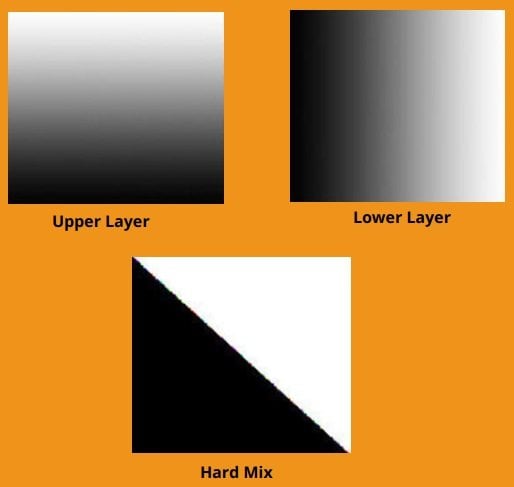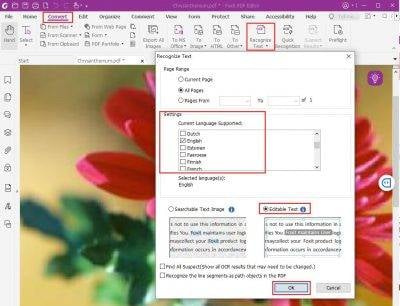- September 15, 2021
- FOXITBLOG

This article will tell you how to edit image objects in PDFs with Foxit PDF Editor (Pro Only).
When you draw a new image object with the Draw New Image command, or edit an image object with the Edit Object command, the Image Editor window is opened and the Image context tab appears on the ribbon. Image Editor is an image-editing program that includes various commands and the Format tab in the right panel.
The Tools group
You can select a command by clicking its icon in the Tools group in the Image context tab. Positioning the pointer over a command will display a tool tip with the command’s name. There are selecting commands and painting commands.
The Selecting tools
The Selecting tools include the Rectangular Marquee command, the Magic Wand command, the lasso commands ( the Lasso command and the Polygonal Lasso command), etc. To see how to use these commands, please follow the steps as below.
The Rectangular Marquee command:
● Click Image > Select > Select  .
.
● Drag over the area you want to select.
The Magic Wand command:
- ● In the Format tab, drag the slider to specify the Tolerance, or enter a value ranging from 0 to 255.
- ● To select only adjacent areas using the same colors, select Contiguous. Otherwise, all pixels using the same colors will be selected.
- ● In the image, click the color you want to select. If Contiguous is selected, all adjacent pixels within the tolerance range are selected. Otherwise, all pixels in the tolerance range are selected.
Tip: The magic wand command lets you select a consistently colored area without having to trace its outline. You can specify the tolerance for the magic wand command’s selection.
The Lasso command:
- ● Click Image > Select > Lasso .
- ● Drag to draw a freehand selection border.
The Polygonal Lasso command:
- ● Click in the image to set the starting point.
- ● Double click the image to close the selection.
Cutting, copying, and pasting selections:
- ● Select the area you want to cut /copy.
- ● Paste the selection into the same image or another application.
The Painting tools
The Painting tools include the Eyedropper command, the Brush command, the Paint Bucket command, the Dodge command, the Burn command and the Eraser command, etc. These commands are generally used in combination with the options in the Format tab in the right panel.
11 possibilities on how to edit image objects in PDFs:
1. Setting options for painting
You can set options for a painting tool in the Format tab in the right panel.
The blending mode controls how pixels in the image are affected by a painting or editing tool.
To select a blending mode for a tool, choose from the Mode drop-down menu.
☼ Normal
Edits or paints each pixel to make it the result color. This is the default mode.
☼ Color Burn
Looks at the color information in each channel and darkens the base color to reflect the blend color by increasing the contrast. Blending with white produces no change.
☼ Color Dodge
Looks at the color information in each channel and brightens the base color to reflect the blend color by decreasing the contrast. Blending with black produces no change.
☼ Darken
Looks at the color information in each channel and selects the base or blend color–whichever is darker–as the result color. Pixels lighter than the blend color are replaced, and pixels darker than the blend color do not change.
☼ Difference
Looks at the color information in each channel and subtracts either the blend color from the base color or the base color from the blend color, depending on which has the greater brightness value. Blending with white inverts the base color values; blending with black produces no change.
☼ Exclusion
Creates an effect similar to but lower in contrast than the Difference mode. Blending with white inverts the base color values. Blending with black produces no change.
☼ Hard Light
Multiplies or screens the colors, depending on the blend color. The effect is similar to shining a harsh spotlight on the image.
☼ Lighten
Looks at the color information in each channel and selects the base or blend color–whichever is lighter–as the result color. Pixels darker than the blend color are replaced, and pixels lighter than the blend color do not change.
☼ Hard Mix
The result of Hard Mix is either 0 or 255 for each channel. If the sum of upper layer value and lower layer value is greater than 255, then it is 255, otherwise the result will be 0. This mode is useful for color enhancement or special effects. See the Example shown below:
☼ Linear Dark/Light
Burns or dodges the colors by decreasing or increasing the brightness, depending on the blend color. If the blend color (light source) is lighter than 50% gray, the image is lightened by increasing the brightness. If the blend color is darker than 50% gray, the image is darkened by decreasing the brightness.
☼ Multiply
Looks at the color information in each channel and multiplies the base color by the blend color. The result color is always a darker color. Multiplying any color with black produces black. Multiplying any color with white leaves the color unchanged. When you’re painting with a color other than black or white, successive strokes with a painting tool produce progressively darker colors. The effect is similar to drawing on the image with multiple magic markers.
☼ Overlay
Multiplies or screens the colors, depending on the base color. Patterns or colors overlay the existing pixels while preserving the highlights and shadows of the base color. The base color is not replaced but is mixed with the blend color to reflect the lightness or darkness of the original color.
☼ Pin Light
Replaces the colors, depending on the blend color. If the blend color (light source) is lighter than 50% gray, pixels darker than the blend color are replaced, and pixels lighter than the blend color do not change. If the blend color is darker than 50% gray, pixels lighter than the blend color are replaced, and pixels darker than the blend color do not change. This is useful for adding special effects to an image.
☼ Screen
Looks at each channel’s color information and multiplies the inverse of the blend and base colors. The result color is always a lighter color. Screening with black leaves the color unchanged. Screening with white produces white. The effect is similar to projecting multiple photographic slides on top of each other.
☼ Soft Light
Darkens or lightens the colors, depending on the blend color. The effect is similar to shining a diffused spotlight on the image.

Specifying opacity or flow
You can specify opacity or flow in the Format tab for the following tools:
- ● Opacity specifies the maximum amount of paint coverage applied by the brush, clone stamp, and paint bucket tools.
- ● Flow specifies how quickly paint is applied by the brush tool.
To specify opacity or flow
Enter a value, or drag the slider for Opacity or Flow in the Format tab.
Opacity or flow can range from 1% to 100%. For transparent paint or a weak effect, specify a low percentage value; for more opaque paint or a strong effect, specify a high value.
2. Using the Eyedropper command
The eyedropper command samples color to designate a new foreground or background color. You can sample from the active image. You can also specify the area sampled by the eyedropper command. For example, you can set the eyedropper to sample the color values of a 3-by-3-pixel area under the pointer.
To sample color with the eyedropper command:
- ● In the Pipette palette of the Format tab, choose an option from the Sample Size menu.
Note: 3 by 3 Average or 5 by 5 Average to read the average value of the specified number of pixels within the area you click.
- ● Click the area containing the color you want to copy.
3. Using the Brush command
Image Editor provides the brush command to let you paint with the current foreground color.
- ● Do one of the following in the Format tab:
- * Set brush options: Diameter to control the size of the brush. Hardness to control the size of the brush’s hard center.
- * Specify a blending mode
- * Specify an opacity and a flow rate
- ● Drag the image to paint.
4. Using the Paint Bucket command
The paint bucket tool fills adjacent pixels that are similar in color value to the pixels you click.
- ● Do one of the following in the Format tab:
- * Specify a blending mode
- * Specify an opacity
- * Specify a tolerance
Note: The tolerance defines how similar in color a pixel must be to be filled. Values can range from 0 to 255. A low tolerance fills pixels within a range of color values very similar to the pixel you click. A high tolerance fills pixels within a broader range.
- ● Click the part of the image you want to fill.
5. Using the Dodge command
The dodge command is used to lighten areas of the image.
To use the dodge command:
- ● Do the following in the Format tab:
- * Set brush options: Diameter to control the size of the brush.
- * Select what to change in the image: Shadows to change the dark areas; Highlights to change the light areas.
- ● Drag over the part of the image you want to modify.
6. Using the Burn command
The burn command is used to darken areas of the image.
To use the burn command:
- ● Do the following in the Format tab:
- * Set brush options: Diameter to control the size of the brush. Hardness to control the size of the brush’s hard center.
- * Select what to change in the image: Shadows to change the dark areas; Highlights to change the light areas.
- ● Drag over the part of the image you want to modify.
7. Using the Eraser command
- ● Do one of the following in the Format tab:
- * Specify opacity and a flow rate.
- ● Drag the pointer over the area you want to erase.
8. Using the Spot Healing Brush command
The spot healing brush command effortlessly removes dust, scratches, blemishes, and other flaws and automatically preserves the shading, lighting, and texture of the original image.
To use the healing brush command:
- ● Do the following in the Format tab:
- * Specify the diameter option to control the size of the brush.
- * Specify the roundness option to control the ratio between the brush’s short and long axes.
- ● Press down Ctrl key and click an area to define a source to repair.
9. Using the Clone Stamp command
The clone stamp command takes a sample of an image, which you can then apply over another image or part of the same image. Each stroke of the tool paints on more of the sample.
To use the clone stamp tool:
- ● Do one of the following in the Format tab:
- * Set brush options: Diameter to control the size of the brush. Hardness to control the size of the brush’s hard center.
- * Specify a blending mode.
- * Specify opacity and a flow rate.
- * Aline: If selected, the position of the source remains fixed relative to the spot where your first brush stroke was, and each brush stroke you paint is cloning an area of the image that is the same distance and direction from the start of the previous stroke; if deselected, every new brush stroke will return to initial clone source spot, and you are making a new copy of your image with each brush stroke.
- ● Press down Ctrl key and click an area to define a resource. Then move the cursor to copy the located image.
10. Choosing foreground and background colors
You can use the Levels palette to select the foreground or background color by choosing from a color spectrum or by defining colors numerically.
You can designate a new foreground or background color using the eyedropper command and the Levels palette.
The default foreground color is black, and the default background color is white.
Levels palette:
The Levels palette displays the color values for the current foreground and background colors. Entering the value in the Levels palette or clicking the arrows 
Note: Image Editor uses RGB mode to work with images.
11. Using the Layer palette
The Layers palette lets you set layer opacity, fill layers and choose a blending mode.
Setting layer opacity
A layer’s opacity determines to what degree it obscures or reveals the layer beneath it. A layer with 1% opacity appears nearly transparent, while one with 100% opacity appears completely opaque.
To specify opacity for a layer
1. Select a layer or layer set in the Layers palette.
2. In the Layer palette, enter a value in the Opacity text box or drag the Opacity slider.
The Filter group
Using filters, please select an item from the Filter tab to add an effect to the image. Move the cursor over one type of filter to preview how the image will look after adding the filter. The filter will be applied only when you click it. And the image with the applied filter will be the original one to be added another filter later if any. To undo the application, you can click Undo button 
Flipping and Replacing Images
Flipping tools are to flip images horizontally or vertically. And you can also replace the original image with other images with the Replace command 
To flip images, please do one of the following:
- ● From theLayer group in the Format tab, click
or
to flip the entire image horizontally or vertically.
- ● To flip the image you select, click the Rectangular Marquee command or the Lasso command to select an area, and click the Flip command
or
.
To replace images, please do the following:
1. From the Layer group in the Format tab, click the Replace command 
2. In the pop-up Open dialog box, search the image file you want and click Open button.
Note: Only BMP, PCX, TIF, and JPEG format file can be opened.
3. You get a confirmation message asking you if you want to continue to replace the current active image. If yes, click the Ok button to finish.
Note: The replaced image will never be recovered.
We hope that this guide to how to edit image objects in PDFs has helped you. if you have any additional questions, please contact us today.



















I really appreciate your work , That’s really informative. I’m looking for it, so thanks for sharing.